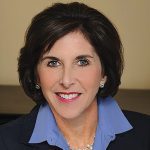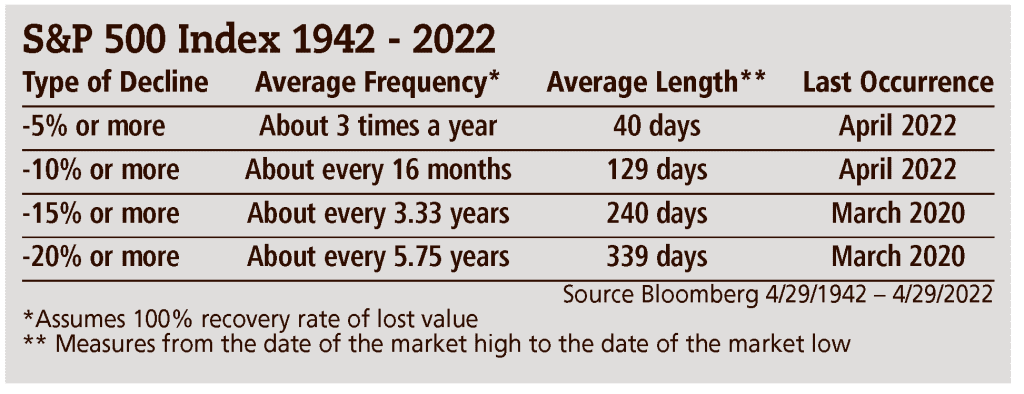Securing the Future
By Patricia M. Matty, AIF
With the Secure Act 1.0 of 2019 and the updated Secure Act 2.0, which went into effect in 2023, there have been many important changes to the rules and regulations for retirement saving and investing over the past five years.
While the elimination of the ‘stretch IRA’ was a key feature of the first Secure Act, the update provides many enhancements for investors. (The so-called stretch IRA refers to leaving an IRA to a non-spouse beneficiary who could then ‘stretch’ distributions from the IRA over their lifetime, thus enhancing the tax-deferral feature of the IRA.)
As financial planners, one of our goals is to help clients save as much as possible for retirement in the most tax-efficient manner. This usually involves maxing out retirement-plan contributions (workplace plans like the 401(k) and 403(b), as well as IRAs), as well as deferring the income associated with retirement-plan withdrawals as long as possible.
“As planners, these changes often prompt investigating alternative ways to pass on wealth earlier to heirs, including layering in additional diversification with investments spread between retirement accounts, Roth IRA/401(k) plans, and non-retirement assets.”
Some key changes associated with these goals are summarized as follows:
• Starting in 2025, the workplace ‘catch-up’ contribution for individuals ages 60-63 will increase to $10,000 per year (from $7,500). The IRA catch-up contribution, which is now set at $1,000, will be indexed to inflation starting in 2024. For high-income earners, 2026 will see a change that restricts catch-up contributions in workplace plans to a Roth account in after-tax dollars.
• RMDs (required minimum distributions) from retirement accounts start at age 73, thanks to the Secure Act 2.0. Starting in 2033, this will increase to age 75. For retirees that have sufficient income and assets in non-retirement accounts, delaying RMDs as long as possible is generally preferred.
• The penalty for not taking your RMD decreased to 25% from 50% (of the RMD amount). This penalty will decrease to 10% if the IRA owner withdraws the RMD and files a corrected tax return in a timely manner. While these penalties are quite rare in our experience, the previous 50% rate was severe and too punitive.
Younger workers and their priorities also received some beneficial changes to the rules and regulations:
• Starting in 2025, businesses adopting new 401(k) and 403(b) plans must automatically enroll eligible employees at a contribution rate of at least 3%. We’ve found that inertia is the enemy when it comes to saving for retirement. Getting younger workers started on the habit of saving and investing is critical to reaping the benefits of tax-deferred growth over the long term.
• Student-loan debt and payments are often cited as a reason for not contributing to a workplace retirement plan. Starting in 2024, employers will be able to match employee student-loan payments with matching payments to a retirement account.
• For 529 college savings plans that have been open for at least 15 years, ‘unspent’ plan assets can be rolled over into a Roth IRA for the beneficiary (subject to a lifetime limit of $35,000).
These selected highlights represent a small sample of the changes brought about by Secure Act 2.0. On balance, we believe the changes provide enhancements to the ability of investors and savers to provide for a prosperous retirement.
As planners, these changes often prompt investigating alternative ways to pass on wealth earlier to heirs, including layering in additional diversification with investments spread between retirement accounts, Roth IRA/401(k) plans, and non-retirement assets.
Eliminating the stretch IRA is inducing non-spouse beneficiaries to take mandatory distributions out over a five- or 10-year period versus over their lifetimes. This can significantly increase the beneficiary’s tax bracket, which may not have been the intention of the financial/estate plan.
Here are just a few options your financial planner can help you look at to navigate these changes:
• Depending upon your own personal tax bracket, you may want to take larger IRA distributions and gift funds to your children before you pass.
• Convert pre-tax retirement assets to Roth IRAs.
• Diversify your savings between qualified and non-qualified accounts.
• If you give to charities, you can donate directly from your retirement accounts once you hit age 70. These gifts and distributions are tax-free to you and have zero tax implications on your income
• Take larger retirement-plan distributions (speak with your accountant and your financial advisor first to ensure this may be a good option, as taking larger distributions may also impact your Medicare premiums), and make annual gifts to your children while you are alive. If you are married, you have a higher AGI than if you are single in later years.
As is always the case, consult your financial professional or tax preparer to see how the changes in the Secure Act 2.0 affect your individual circumstances. This information is provided for informational purposes only and should not be construed as advice. St. Germain Investment Management does not offer any tax or legal advice.
Patricia M. Matty is senior vice president, financial advisor, and financial advisory director for St. Germain Investment Management.











